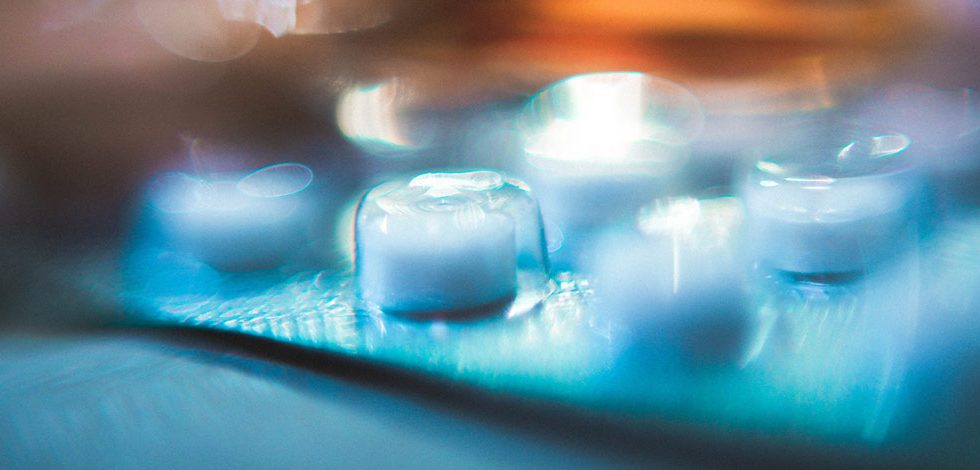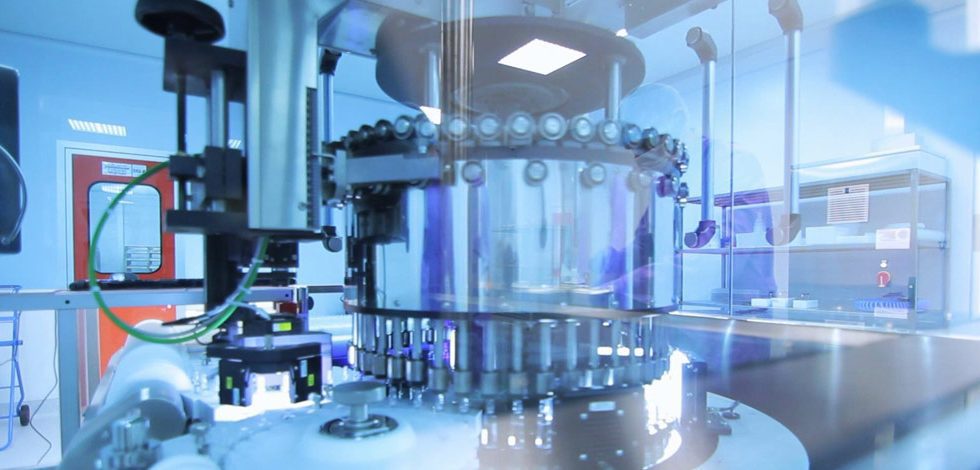From aerospace components to complete building structures, 3D printing technologies are at the forefront of innovation across a range of industries. The possibilities in flexible design, accuracy and personalisation are also being grasped in bionics with the manufacture of prosthetic hands and limbs.
Yet the human applications of advanced manufacturing are even more fundamental when the ‘ink’ in the 3D printer is literally the stuff of life. Using biological materials such as human cells, the advancing technology of 3D bioprinting is generating great interest, investment and hope. The applications and benefits are significant and wide-ranging. 3D bioprinting is pushing the boundaries of tissue engineering, with huge gains in time, efficiency, precision and reproducibility. Reducing the need for animal testing, 3D-bioprinted tissues can also raise the success rate of new drugs in clinical trials, cutting the exorbitant cost and long lead times for development. In the longer term, fully functional human organs could be bioprinted, saving lives by bypassing transplant waiting lists and preempting rejection with a perfect match to each patient’s unique physiology.
What is 3D bioprinting?
A technological breakthrough amid many 3D printing (3DP) technologies, bioprinting is not always clearly defined or understood.
The European Parliament defines 3D bioprinting broadly – as ‘the use of 3D printing technology for applications related to the body, whether the products themselves include biological material or not, and whether or not their purpose is medical. It includes any application for rehabilitating, supporting or augmenting any kind of biological functionality’.
The US Food and Drug Administration (FDA) does not have an official definition, but regularly uses the term ‘3D bioprinting’ to refer to the use of biological materials. Canada’s Agency for Drugs and Technologies in Health (CADTH) makes the distinction between 3DP techniques that manufacture biocompatible materials – such as implants or prosthetics – and 3D bioprinting as a 3-DP technique that uses biological materials such as human cells.
It is this narrower sense – and a 3DP sector that is undergoing a surge of interest – that is the focus here.
How 3D bioprinting works
3D bioprinting fabricates tissues from biological materials such as human and animal cells and collagen. Stem cells have the advantage of being able to adapt to host tissues and create an organ-like tissue or organoid, a model resembling a mini-organ. The bioprinting occurs inside a bioreactor, which maintains a sterile environment to avoid contamination. Specific temperatures and humidity conditions are also necessary for the cells to stay alive. To produce the bioink used for bioprinting the tissue, cells are collected from patient biopsies and are maintained in culture. Once sufficient cells are generated they are loaded into a cartridge and the bioprinting can start.
Pharma companies see immense potential in 3D bioprinting technology, especially for development of drugs and cosmetics. MSD, for example, entered into an agreement with the bioprinting pioneer Organovo back in 2015 to gain commercial access to its latest 3D-bioprinted human liver tissue for toxicology and pre-clinical drug testing.
Last year chemicals giant BASF joined forces with CTI Biotech to develop a new 3D-bioprinted skin for cosmetic testing. The skin tissue produced by the French specialist in regenerative medicine incorporates immune cells, which are essential for studying the anti-inflammatory properties of active cosmetic ingredients. The collaboration has proved successful, demonstrating major bioprinting capabilities by fabricating a substantial number of skin model copies in a relatively short time. The overarching aim is to accelerate development of innovative and highly reliable ingredients for the huge skincare market.
This prospect of significant time (and cost) savings is one the main advantages the technology offers. The other factor spurring the growing interest of pharmaceutical and chemical groups is the ability to generate complex structures, opening the door to bioartificial tissues and advanced therapies.
Timely production
A tremendous time-saving can be achieved with 3D bioprinting. Scientists in Madrid succeeded in bioprinting a tissue resembling human skin using cells from patient biopsies in just 35 minutes. The same amount of skin-like tissue, which can be used for treating burns and wounds, previously required three weeks of manual fabrication. No decline in the quality of the tissue was observed, in fact, thorough analysis showed that it was not possible to distinguish between the bioprinted and manually produced tissues.
This combination of speed and quality control means the production process can be more easily scaled up. CTI Biotech – which produces 3D human tissue models for cancer research as well as dermatology – has recently invested 600,000 euros in the acquisition of five bioprinters from Cellink, the Swedish developer of the Bio X printer. These bioprinters are used to produce micro-tumours in the search for new cancer treatments. They have three printheads, with cartridges dedicated to cancer cells (from patients), fibroblasts and immune cells. The bioprinter is programmed to reproduce a replica tumour to a computer design. Previously, lab assistants had to deposit a liquid containing cells drop by drop in a long, tedious process. Now its bioprinting facility can produce hundreds of micro-tumours in a matter of minutes.
Such productivity promises the potential to automate tissue engineering and ramp-up production.
Reproducing complexity
As well as streamlining production, bioprinting technology ensures the reproducibility of the process, eliminating the significant variations arising from manual methods, so the tumours are identical. This means they reproduce with more accuracy the natural environment experienced by cells in the living organism.
In the cancer example, researchers create CAD designs that map the complex morphology of tumours and cell structures with high precision. Using bioprinting software, the production process is capable of creating even highly complex 3D tissues with high reproducibility.
When accurately reproduced, cell arrangements allow a significantly higher connection between different types of cells to mimic human tissue reactions. This creates the potential for identifying the toxicity and effectiveness of new medications much earlier in the drug development process.
Compared with manually produced 3D tissues – which have severe limitations in terms of lack of control over size, low reproducibility, and level of complexity – bioprinted models can have a far higher impact on the success rate of clinical trials.
There are other drivers behind the investment in 3D bioprinting.
The cosmetic industry began to engage with the technology in the face of legislation prohibiting animal testing. The European Union’s first ban covered finished products in 2004, followed by cosmetic ingredients in 2009. A complete ban on production and marketing of products tested on animals took effect in 2013. This has accelerated the development of human-based 3D skin tissues for cosmetic ingredient testing, and statutory bans on animal testing have followed in many other jurisdictions around the world. As bioprinting of this relatively simple form of tissue has become highly advanced, so has bioink and the ability to print more complex structures with different types of cells.
Drug development
Animal testing, however, is still authorised and required for the development of new drugs, and often used for preclinical validation. As well as being highly controversial, the testing of formulations on animals is also one of the reasons blamed for the low success rate of clinical trials. On average, only 10% of drugs that reach clinical stage development obtain FDA approval and are commercialised. Because animal and humans have very different physiologies, a drug that shows promising results in an animal will not necessarily be effective in a person. For the other 90% of drugs, it is estimated that the cost of each failure ranges from $800 million to $1.4 billion. Mitigating this risk and reducing costs is a huge incentive for pharmaceutical companies to develop and exploit bioprinting solutions.
In the case of CTI Biotech, it expects its investment in bioprinting micro-tumours to halve the time taken to develop new medicines to three years and decrease its cost by 20%. Such potential translates into high market values.
Organovo – whose bioprinted liver tissues are being used for preclinical toxicology validation – values the current market for liver and kidney in vivo tissue testing at close to $3 billion. As bioprinting proves to be a cost-effective and efficient solution in other areas, the value of the technology can only grow.
A 2017 research report projected that 3D bioprinting applications would be generating $1 billion in revenue annually within a decade. Drug discovery and cosmetics testing would account for most of this market, but tissue regeneration could become an even larger opportunity beyond 2027. It was followed, in autumn 2018, by a bullish projection that the global bioprinting market – including 3D bioprinting machines, bioink, consumables, software and related services – would be worth $4.7 billion by 2025.
As 3D bioprinting proves to be a cost-effective and efficient technology for producing tissue samples in an ethical manner, R&D investment is growing. In 2019, the European Union granted funding to 13 bioprinting research projects, worth a total of 28 million euros.
Where next for 3D bioprinting?
Some scientists estimate that it will be possible to bioprint full-sized and fully functional organs within the next ten years. Not all of the scientific community agrees with this timeline. Given the astounding complexity of organs and their complicated networks of veins and capillaries, the challenges cannot be underestimated. Nerves, blood vessels and lymphatic vessels must not only be incorporated, but also integrated with the body’s other systems.
This goes considerably beyond bioprinting and transplanting skin, bone and other body components such as an ear, trachea or cardiac valve, which is already feasible. It may be that, at least in the medium term, bioprinting remedial patches of tissue yields more reliable and valuable results. This is perhaps in combination with other regenerative treatments, repairing rather than replacing diseased organs.
Organovo has shown how human liver tissue 3D-printed with the necessary variety of cell types functions and engrafts when implanted in small animal disease models for up to 90 days. It sees the immediate challenge as increasing the size of grown tissue for paediatric patients and small adults.
The ultimate goal for champions of the technology is organ replacement. Expanding the boundaries of 3D tissue engineering to the point of producing sophisticated tissues and organs for patients awaiting transplants would transform and save lives. Bioprinted transplantable organs using patients’ own cells would overcome the challenges of immunosuppression and rejection.
The human need is near limitless, given a global shortage of organs for lifesaving transplants. In the US the lack of donor organs is the leading cause of death. In the UK patients wait an average of two-and-a-half years for a kidney transplant, with similar shortages for liver, lungs and other organs.
Perfecting the production of implantable organs is a formidable challenge. It requires significant investment and research breakthroughs in bioink and 3D bioprinting, while integrating technologies in biomaterials science, cell biology, physics and medicine. If successful, the high costs of the technology would limit the impact on waiting lists, even though more cost-effective bioprinters using 3D printer components are becoming available. The prospect of decentralised bioprinting of personalised implants to order in local hospitals and clinics remains, for now at least, in the realm of science fiction.
Bioprinting advances
Yet innovations – in bioink and bioprinting techniques – are emerging that lend some credence to optimistic predictions for bioprinting.
Scientists in the US have developed a novel method to bioprint functional parts of a human heart, such as valves and ventricles. Tissue scaffolds are fabricated from collagen, the major structural protein in the human body. Based on an MRI scan, the anatomical structure of a patient’s heart can be replicated with high precision. Their method also allows transmission of biochemical signals between the bioprinted heart cells, crucial for the organ’s normal functioning within a living body. The technique is seen as a step closer to bioprinting a full-sized, viable adult human heart.
In Brazil scientists have succeeded in bioprinting a fully functional mini-liver that is able to store vitamins and provide vital body functions. Combining several bioengineering techniques, their innovative bioink used ‘clumps’ of cells to maximise contact between them and maintained tissue functionality for much longer than in other studies. The mini-organ was bioprinted in 90 days using a patient’s blood cells.
A joint team of researchers in France and the Netherlands claimed in summer 2019 that their volumetric bioprinting technique was a game-changer for tissue engineering. They projected a laser down a spinning tube of hydrogel laden with stem cells. Focusing the energy creates complex 3D shapes in a few seconds. Introducing endothelial cells (from lymphatic and blood vessels) makes the tissue vascular. A heart valve, meniscus and complex-shaped part of the femur were produced.
Another bioprinting avenue of development, which GE Healthcare is pursuing, is 4D bioprinting. This would mean printing of 3D tissues with the capability to respond over time to their environment and change in shape (eg growing) or function (eg cellular differentiation or even organ development). France’s Poietis is developing a 4D bioprinting approach using single-cell resolution, artificial intelligence and software designed to programme tissue self-organisation so it matures in a controlled way until biological functions emerge.
Personalisation of medicine on the back of advances in gene therapy is also expected to reinforce interest in custom-building tissues and organs from patients’ own cells and ongoing innovation in this field.
As on other new frontiers of medicine, there will be safety, ethical and regulatory controls to navigate.
There is currently no overarching regulatory regime governing the whole bioprinting process, but various pieces of legislation apply to tissue engineering and regenerative medicine (such as the European Commission’s Regulation on Advanced Therapy Medicinal Products). In the UK, the Parliamentary Office of Science and Technology (POST) has started to take a close interest. A POSTnote due during 2020 will give parliamentarians advance knowledge of the public policy issues and pay specific attention to quality management in what would be decentralised manufacturing.
Development of bioprinting could be affected by disallowing certain bioinks or techniques. Contrariwise, clarification from regulatory agencies around safety and efficacy could help clear the way for clinical trials.
The legislative framework on bioprinting is sure to evolve in coming years. The only question is the pace, and to what extent this will lag or be dictated by developments in the field.
First published on PharmaTimes on 15th July 2020.
Our consultants are hired for their industry and sector expertise. To discover more insights from our Life Sciences specialists, download your copy of “Making science fiction, fact” today.















No Comments